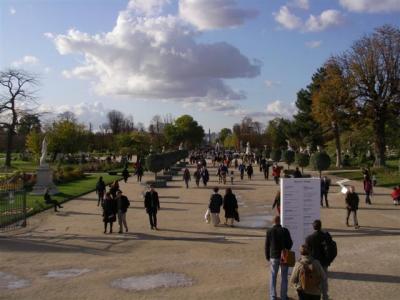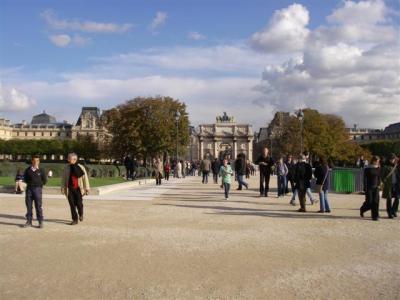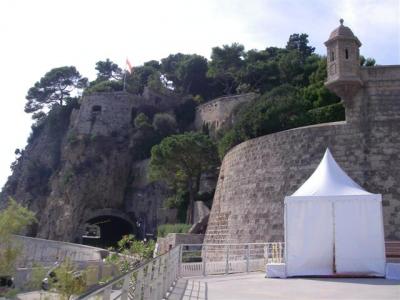Continued from yesterday”¦ The main entrance to the Jarden Tuileries, the gardens on the northeast side of the Louvre, is off the Place de la Concorde. Riding Segways is not allowed in the garden, so we left the Place du Concorde and rode along the outside of the south side of the garden until we got to the Place du Carrousel, which is a little area between the Jarden Tuileries and the Louvre. From the Carrousel, we had a nice view of the garden. The garden was created in the mid-1600’s, and it is typical French, symmetrical, neatly laid out and immaculately groomed. It is pretty, with fountains, lush grass, lots of trees, flowers and statues. Our guide told us that the Nazis had cut down all the trees during WWII, so all the trees had to be replanted after the war. That is why they are not very big. In this photo, you can see the obelisk at the opposite end. The French are very precise with symmetry, so they made sure the obelisk lined up perfectly with the garden walkway.

Back when the Louvre was the Royal Palace, the Carrousel was where the royalty practiced their horse riding skills and etiquette. The entrance to the Louvre is flanked by to the Arc de Triumph du Carrousel, a Roman style arch fairly similar to the Arc de Constantino in Rome. It is topped by a statue of someone standing on a chariot. Here is the Carrousel, the arch and some of the Louvre buildings.

The Louvre was originally built in the 13th century as Continue reading

